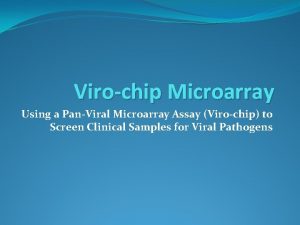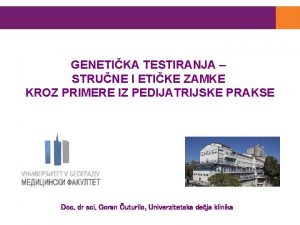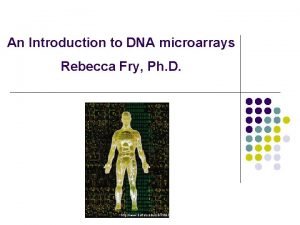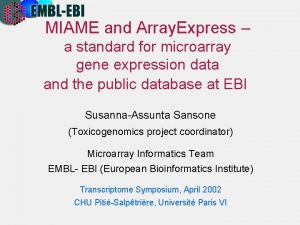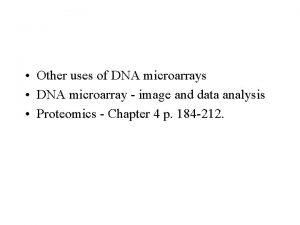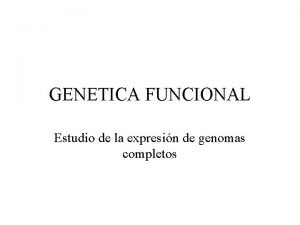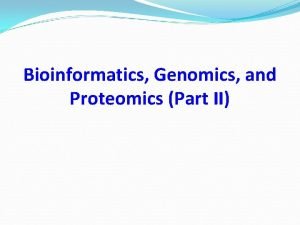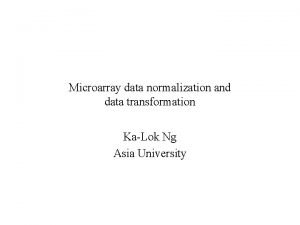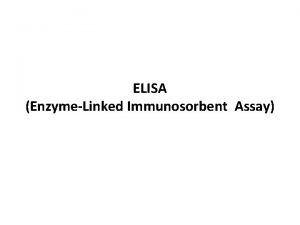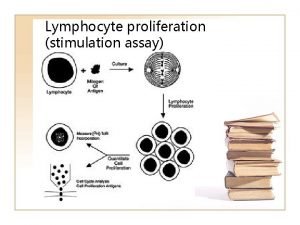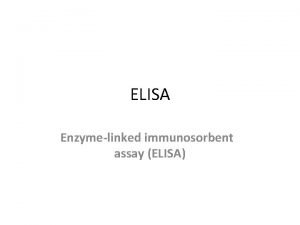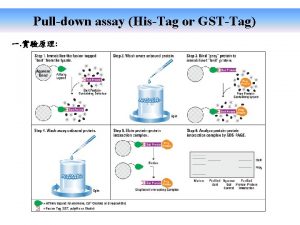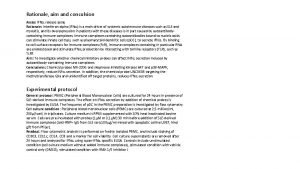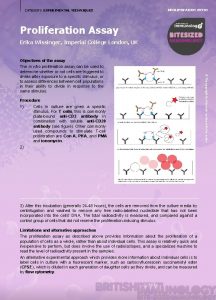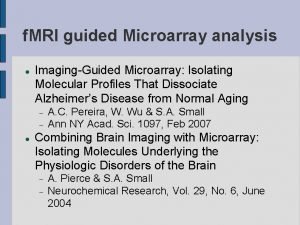Virochip Microarray Using a PanViral Microarray Assay Virochip








- Slides: 8

Viro-chip Microarray Using a Pan-Viral Microarray Assay (Viro-chip) to Screen Clinical Samples for Viral Pathogens

Introduction �Microarray for simultaneous screening of ALL known viruses “Virochip” � Detection of novel variants on the basis of conserved sequence homology. �current version of the Virochip has been ported to an Agilent microarray platform and consists of ~36, 000 probes derived from over ~1, 500 viruses in Gen. Bank as of December of 2009.

Purpose �Detection of those viruses that cannot be detected by conventional methods, � such as SARS coronavirus and 2009 pandemic H 1 N 1 influenza virus, can be detected through virochip microarray �Novel rhinovirus clade �XMRV (a retrovirus linked to prostate cancer)8, �avian bornavirus (the cause of a wasting disease in parrots) �Novel cardiovirus in children with respiratory and diarrheal illness

Protocol (steps of viro-chip assay) �Nucleic acid extraction from clinical samples �Reverse transcription of extracted RNA and 2 nd-strand c. DNA synthesis. �PCR amplification of randomly primed c. DNA �Cy 3 fluorescent dye incorporation �Hybridization of labeled material to the Virochip microarray �scanning and analysis

Protocol

Analysis and results �Scan Cy 3 -labeled array at 5 μm or 2 μm according to the instrument's standard scanning protocol (Figure 2 B). �Analyze Virochip microarrays by visual inspection, cluster analysis, or the automated Virochip analysis program, E-Predict. � By each of these three methods, influenza virus is readily detected in the nasal swab sample (from a child with influenza-like illness)

Analysis and results

Discussion �The Virochip protocol as described here is complex and requires skilled research technician. �reagent concentrations and conditions for PCR, labeling, and hybridization are critical. �"Some applications of the Virochip assay currently under development include broad-spectrum viral diagnostics in the clinical laboratory, outbreak investigation, purity screening of drugs and vaccines, and novel viral pathogen discovery.
